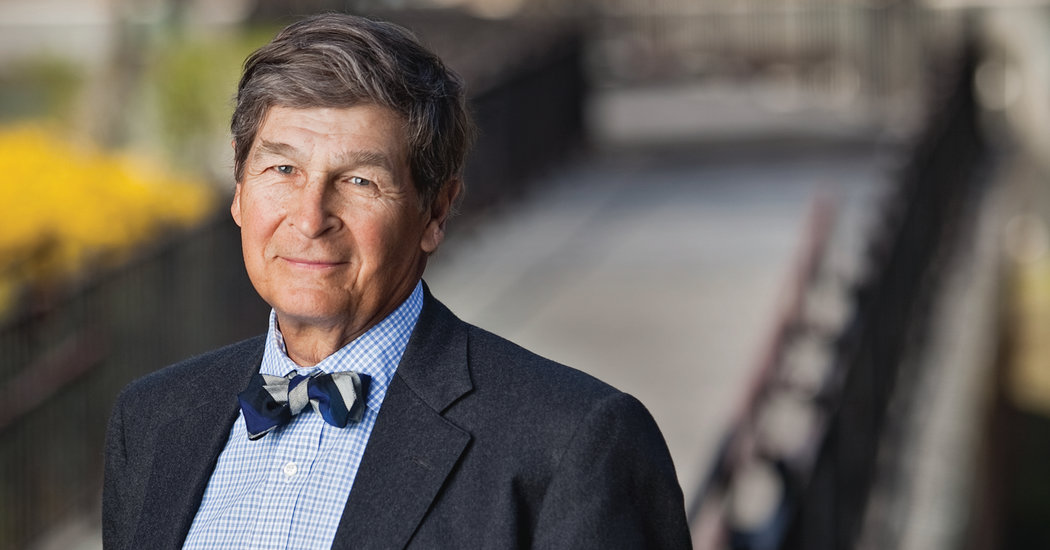
Dr. John Gunderson, whose studies of people with suicidal urges, fears of abandonment and squalls of emotion helped establish borderline personality disorder as a stand-alone diagnosis, providing a foundation for research and the first effective treatments, died on Jan. 11 at his home in Weston, Mass. He was 76.
His wife, Susan, said the cause was prostate cancer.
Dr. Gunderson, who was trained in Freudian analysis, was evaluating the effects of psychotherapy on people identified as schizophrenic in the early 1970s when he discovered that many of the participants in his study had received the wrong diagnosis. They did not have recurring psychoses, the signature symptom of schizophrenia, but rather a poorly understood syndrome described by the German-American psychiatrist Adolph Stern in 1938: Their mental state was on the “border” between garden-variety neurosis and full-blown psychosis.
Dr. Gunderson plunged into the literature on borderline patients and distilled their defining features. These included intense fears of being alone, floods of emotional turmoil and impulsive self-harming, like cutting. He collaborated with Margaret T. Singer on an influential 1975 paper, “Defining Borderline Patients: An Overview,” turning a collection of descriptive accounts into a firm diagnosis. He also developed a diagnostic interview that set the standard for identifying the disorder, bringing focus to what had been a baffling condition.
“The way these patients were described before was as treatment failures, as if it was somehow their fault,” Dr. Lois Choi-Kain, director of the adult borderline center at the Harvard-affiliated McLean Hospital, in Belmont, Mass., where Dr. Gunderson spent much of his career, said in a phone interview. “John came along and said no, these are symptoms of the disorder, not failures.”
That paper and others provided a foundation for research into borderline disorder that had not previously existed, clearing the way for its inclusion as a full stand-alone diagnosis in the landmark third edition of the Diagnostic and Statistical Manual, psychiatry’s encyclopedia of mental disorders, published in 1980.
In 1996, Dr. Gunderson published another analysis, “The Borderline Patient’s Intolerance of Aloneness: Insecure Attachments and Therapist Availability,” providing doctors and patients with an X-ray of the condition’s internal emotional terrain.
“Being alone is often intolerable to them because it is associated with a profound sense of being bad or evil,” he wrote, “a self-image distortion accompanied by such intense feelings of guilt or shame that the question of worthiness to live often follows.”
In therapy, borderline patients play rough. They are, by turns, charming and mocking, detached and enraged, bullying and needy, often threatening suicide. Dr. Gunderson seemed made for the challenge, Dr. Choi-Kain said: He was blunt and provocative himself, giving as much as he took, with a respectful enthusiasm that pushed patients without alienating them.
He was adamant over the years that psychiatric drugs did not help resolve borderline symptoms. He favored talk therapies, including what is known as dialectical behavior therapy, an approach developed by the University of Washington psychologist Marsha Linehan.
He also published, with Dr. Paul Links, a handbook describing what he called good psychiatric management, intended for nonspecialists, patients and families dealing with the storms of rage and self-loathing of borderline personality. This guide became widely used by doctors.
Dr. Gunderson’s long commitment to people with borderline personality disorder had a hopeful payoff. He collaborated on a long-term study, led by Harvard’s Mary C. Zanarini, which found that most people given a diagnosis of borderline personality eventually recover: some 15 percent in the first year, a third by two years, fully 85 percent after a decade.
“He was the first person to look systematically at the data and figure out what the heck this diagnosis really meant,” said Dr. Glen Gabbard, a clinical professor of psychiatry at Baylor College of Medicine in Houston. “Before John, there were observations, case studies, confusion; after John, we had clarity.”
John Gunder Gunderson was born on June 20, 1942, in Two Rivers, Wis., the youngest of three children. His father, Sherman, was a professor of economics, and his mother, Alma (Walter) Gunderson, was a high school English teacher. He grew up in Oshkosh, graduating from high school there in 1960.
Determined to be a doctor, he entered Johns Hopkins University in Baltimore and found himself in deep water: Everyone else seemed to be pre-med, too, and better prepared than he. He stuck it out, earning his way into a two-year Dartmouth Medical School program that fed Harvard’s medical school, where he finished his degree in 1967.
In 1963, while at Dartmouth, he met Susan Riley, a student at Skidmore, on a blind date. They were married in 1965, and she would go on to work in money management in Boston.
In addition to his wife, he is survived by two children, Craig and Kelly Gunderson, and five grandchildren. His sister and brother died before him.
After completing an internship in Minneapolis, Dr. Gunderson did his residency at the Massachusetts Mental Health Center in Boston and received training as an analyst at the Boston Psychoanalytic Institute. He joined Harvard in 1973 and retired last year, continuing his research and seeing patients throughout his tenure there.
In a long essay reflecting on his career, Dr. Gunderson returned repeatedly to the intensely personal, often uncertain craft that drew him to psychiatry in the first place.
“My life in psychiatry has provided me with access to people’s deepest feelings, their most private secrets, and to the responsibilities of being entrusted by such access,” he concluded. “At these times you are like a priest, parent or best friend as much as a doctor.”

